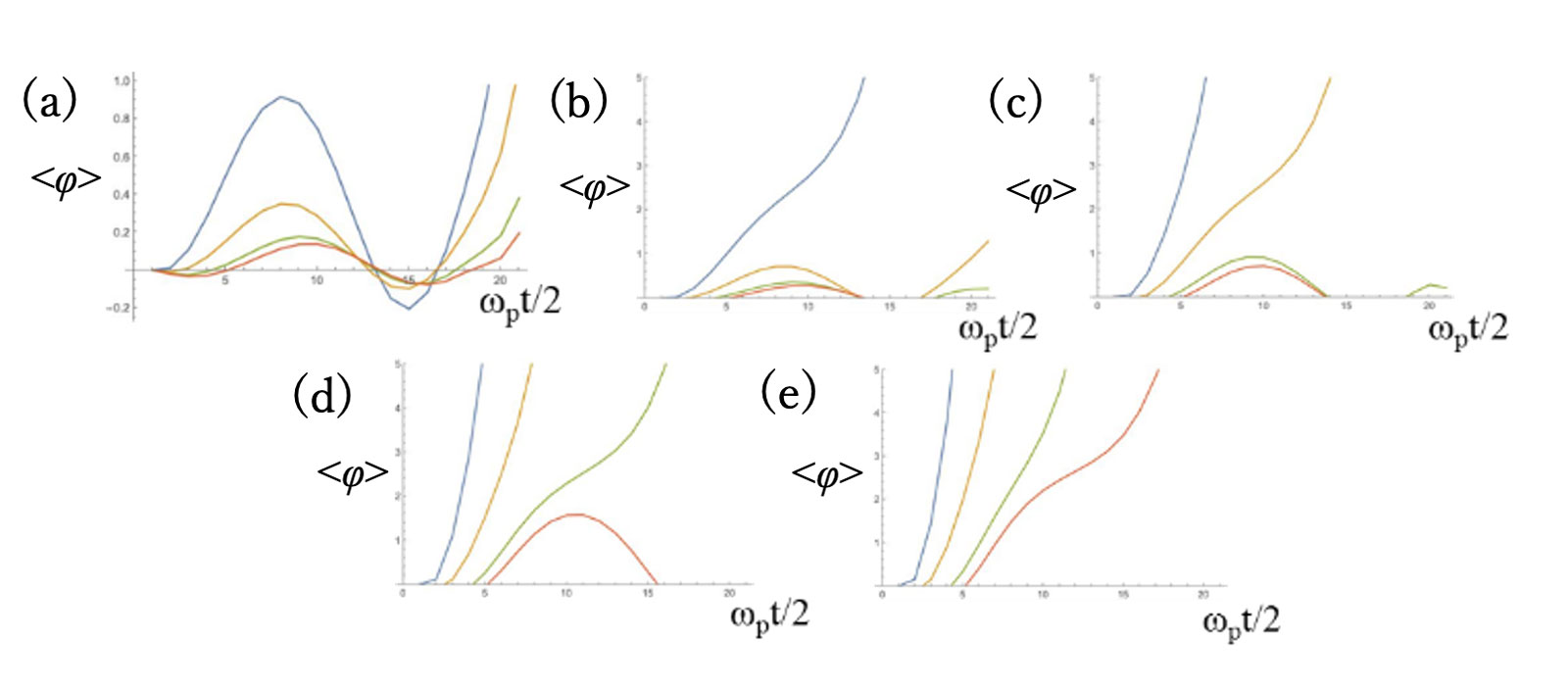PC1-7
Effect of thermal fluctuation on voltage state in an intrinsic Josephson junction
Nov. 29 11:30-11:45
*Takamasa Wachi1, Masaru Kato2
Osaka Prefecture University Japan1
Osaka Metropolitan University Japan2
When a current applied to an intrinsic Josephson junction (IJJ) in a copper oxide high-temperature superconductor is increased, the IJJ enters a voltage state and then the voltage increases stepwise. After these voltage states, when the current is lowered, THz oscillation occurs. The voltage state is described as a running state of a particle in a washboard potential, using the RCSJ model of the Josephson junction (JJ).
In this study, solving coupled layered JJ model with thermal fluctuation current and using the finite element method (FEM). We investigate these voltage state in the IJJ. [1]
We consider an IJJ model with seven JJ layers. Fig. 1 shows time evolution of the spatial average <φ> of the phase difference Δφ(dt). Fig. 1 (a), (b), (c), (d) and (e) shows time evolutions of the spatial average of the phase difference for jext/jc = 1.0, 2.0, 5.0, 10.0 and 13.0 respectively. Here, jc is a critical current of the JJ. In Fig. 1, blue line, orange line, green line and red line show time evolutions of the spatial average of the phase difference in the first, second, third and fourth JJ layer, respectively.
In Fig. 1 (a), the first JJ becomes voltage state first. Then, second JJ becomes voltage state due to the coupling between first and second JJ’s (Fig. 1 (b)). Also, we found that when the coupling between layers becomes strong switch to the voltage state easily, the inner JJs and the effect of thermal fluctuation current becomes smaller.
We will also report the results of simulations in which the thermal fluctuation force is applied to the phase.
Figure 1. The time evolution of the spatial average of phase differences in the first, second third and fourth JJ layer at jext/jc = 1.0 (a), jext/jc = 2.0(b), jext/jc = 5.0 (c), jext/jc = 10.0 (d) and jext/jc = 13.0 (e).
[1]. T. Wachi and M. Kato, to be published in J. Phys. Conf. Ser.
Keywords: intrinsic Josephson junction, finite element method, switching to voltage state
